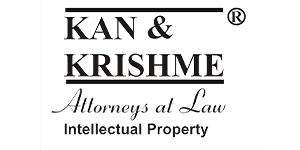Introduction
In a recent judgment dated August 22, 2025, the Madras High Court in Amgen Inc. v. Assistant Controller of Patents 1overturned the Controller’s decision to reject patent Application No. 5857/CHENP/2008 which had been rejected under Sections 3(d), 3(e), 2(1)(ja) (lack of inventive step), and 10(4) of the Patents Act, 1970 for insufficiency of disclosure.
The Court held that the subject invention satisfied the inventiveness requirement under Section 2(1)(ja) and was not barred from patentability under Sections 3(d) and 3(e). However, disclosure under Section 10 of the Act was found partly satisfied. Accordingly, the Court directed that the application proceed to grant, subject to amendments restricting independent claims 1 and 9.
Claims (as amended)
Claim 1. “A lyophilized therapeutic peptibody composition comprising a buffer, a bulking agent, a stabilizing agent, and a surfactant;
wherein said pH buffering agent is 10 mM histidine and wherein the pH is 5.0;
wherein said bulking agent is 4% w/v mannitol;
wherein said stabilizing agent is 2% w/v sucrose;
wherein said surfactant is 0.004% w/v polysorbate-20;
wherein said therapeutic peptibody comprises a structure set out in Formula V
Formula V: [F¹-(L¹)e-P1-(L2)f-P2]-(L1)c-WSPd wherein:
F1 is an Fc domain attached at the Nterminus of -L1-P1-L2-P2;
P1 and P2 consist of peptides with the amino acid sequence of SEQ ID NO.459
of Table 6;
L1 and L2 are each independently linkers;
e and d are each 0; and
e and f are each independently 0 or 1.”
Claim 9. “A method for making a lyophilized therapeutic peptibody comprising the steps of:
a) preparing a solution of a buffer, a bulking agent, a stabilizing agent, and a surfactant;
wherein said pH buffering agent is 10mM histidine and pH is 5.0;
wherein said bulking agent is 4% w/v mannitol;
wherein said stabilizing agent is 2% w/v sucrose; and
wherein said surfactant is 0.004% w/v polysorbate-20; and
b) lyophilizing said therapeutic peptibody solution;
wherein said therapeutic peptibody comprises a structure set out in Formula V
Formula V: [F1-(L1)e-P1-(L2)f- (L1)c-WSPd wherein:
F1 is an Fc domain attached at the Nterminus of -L’-P’-L2-P2;
P1 and P2 consist of peptides with the amino acid sequence of SEQ ID NO.459 of Table 6;
L1 and L2 are each independently linkers;
c and d are each 0; and
e and f are each independently 0 or 1.”
Facts
Amgen filed a patent application No. 5857/CHENP/2008 for a lyophilized therapeutic peptibody formulation with improved stability. The Patent office (first respondent) issued a First Examination Report (FER) raising objections under Sections 3(d), 3(e) and lack of inventive step. Appellant submitted partial response in December 16, 2013 and complete response in July 25, 2014. After receiving hearing notice dated 27 April 2016, the Appellant filed written submissions on June 24, 2016. An Opponent (second respondent) filed a pre-grant opposition on July 18, 2016 on grounds of: Obviousness [Section 25(1)(e)], Not an invention [Section 25(1)(f)] and Insufficient disclosure [Section 25(1)(g)]. The Appellant replied to the pre-grant opposition on December 21, 2016. Hearing notices were issued thereafter and eventually the hearing took place on December 8, 2020. The Appellant filed written submissions on December 25, 2020 following which the Controller rejected the application. Amgen Inc. appealed the refusal to the Madras High Court.
Appellant’s Arguments
Section 3(d): The Controller wrongly cited the “mere use of a known process” exclusion without demonstrating how the appellant’s process was already known. Therefore, rejection under Section 3(d) cannot stand.
Section 3(e): Tables 40 and 41 of the specification demonstrate synergy between the peptibody and excipients. In particular, stability data varied significantly when polysorbate (Tween-20/80) was included or excluded, proving functional synergy.
Inventive step (Section 2(1)(ja)): EPO had already recognized that lyophilization formulations are peptibody-specific. Further, experimental data in the specification establishes non-obviousness. They further argued that prior arts D1, D2, and D4 (belonging to the appellant) do not disclose lyophilized peptibody formulations. D3 discloses excipients but not peptibodies. D5 discloses IL-12, a heterodimeric protein, which is distinct from the homodimeric TPO-mimetic peptibody in the invention. Hence, PSITA would not combine D4 and D5. Thus, invention is inventive.
Sufficiency of disclosure (Section 10): The Act only requires disclosure of the best method known to the applicant, and not data for all possible embodiments. SEQ ID 1017 was disclosed adequately, providing data for all 52 mimetic peptibodies was unnecessary.
First Respondent’s Contentions
Section 3(d): Lyophilization is a well-known process for proteins, and using it for a known peptibody does not constitute an invention. Method claim 9 is thus “mere use of a known process” and not patentable.
Section 3(e): Prior art already taught similar excipient combinations and stability (Table A of the specification itself shows these excipients were known for lyophilizing protein formulations). Hence, the claimed composition is just an admixture without any demonstrated synergy.
Lack of Inventive Step (Section 2(1)(ja)): Prior art D4 disclosed the same peptibody (Formula V/SEQ ID 1017) and mentioned lyophilization. Prior art D5 disclosed all excipients of the claimed invention in almost identical concentrations for lyophilized protein formulations. Peptibody and protein are used interchangeably in the applicant’s own specification; thus, there is no substantive distinction. Variations in excipient concentration (e.g., mannitol 4% vs. 4.15% in D5; tween-20 0.004% vs. 0.02% in D5) are minor optimizations, and not inventive differences. Tables 40–41 show no special reasoning for choosing 0.004% tween-20, hence selection is arbitrary and obvious to a skilled person.
Sufficiency under Section 10: The invention covers 52 mimetic peptibodies but experimental data was provided only for one (SEQ ID 1017). Hence, disclosure is insufficient and does not fully enable the invention across the entire scope of the claim.
Issues before the Court
- Whether the claimed formulation was excluded Section 3(d) as the “mere use of a known process.”
- Whether the invention was barred under Section 3(e) as a “mere admixture” lacking synergy.
- Whether the invention lacked an inventive step in light of cited prior art.
- Whether the disclosure was insufficient under Section 10(4).
Court’s Rationale
Issue 1 – Patentability under Section 3(d)
The Court held that cited prior art D4 discloses a therapeutic peptibody of the structure of Formula V, but it does not describe its lyophilization. D5, on the other hand, discloses a lyophilized IL-12 composition using excipients, but it does not specify the lyophilization method. The Court also determined that independent claim 9 specifies the use of certain excipients from particular categories such as a buffering agent at a specific pH, a bulking agent, a stabilizing agent, and a surfactant at precise concentrations. Therefore, the process described in independent claim 9 cannot be characterized as the mere use of a known process. Thus, the rejection under Section 3(d) of the Patents Act was held to be not sustainable.
Issue 2 – Patentability under Section 3(e)
The Court held that Tables 39 to 41 of the complete specification of the claimed invention contain evidence of synergy between the ingredients of the claimed invention. Specifically, Table 39 demonstrates the synergy achieved by using at least a threshold concentration of the stabilizing agent/lyoprotectant, sucrose, while Tables 40 and 41 highlight the antiaggregation benefits of using the specified concentration of tween-20. Therefore, the rejection of the claimed invention under Section 3(e) was held to be not justified.
Issue 3- Inventiveness under Section 2(1)(ja)
The Court observed that while excipients are generally known, the specific selection and concentration of these excipients in the claimed invention cannot be regarded as obvious, given the vast number of possible permutations and combinations. The Court further noted that although prior art D4 discloses the peptibody (Formula V), it does not provide any details regarding its lyophilization. In contrast, D5 concerns IL-12, a heterodimeric protein that is structurally and functionally different from the homodimeric TPO-mimetic peptibody of the claimed invention. Since D4 and D5 address distinct protein systems and there is no teaching, suggestion, or motivation linking them, it would not be rational without hindsight to combine their disclosures. Thus, starting from D4, a skilled person would look for specific literature on lyophilization of TPO-RA peptibodies or peptides, not to D5. Consequently, the claimed invention was held to not be an obvious outcome of D4 and D5.
Issue 4- Sufficiency of Disclosure (Section 10(4))
The Court noted that Amgen’s claims (1 and 9) covered Formula V, which included 52 different TPO mimetic peptide sequences listed in Table 6. Further, experimental data (Example 7, Tables 39–41) was provided only for SEQ ID 459 (and related peptibodies, SEQ IDs 1012–1017). These sequences were enabled with sufficient disclosure.
However, the other 51 sequences vary significantly in amino acid composition and properties and no guidance or supporting data was provided for them. Thus, a skilled person would not be able to reproduce the invention for all 52 sequences. Therefore, since the disclosure was insufficient for the full scope of the claim, the broad claims (claims 1 and 9) had to be narrowed to cover only the sequences supported by experimental data.
The Court set aside the Controller’s order, and directed the patent application to proceed to grant, subject to amendments limiting claims 1 and 9. The Court concluded that the claimed invention satisfies the requirements of Section 2(1)(ja), and Section 10 of the Patents Act and is not excluded from protection under Section 3(d) or 3(e) of the Act.
Our Analysis and Conclusion
This decision clarifies that Section 3(d) cannot be invoked against every known process unless the exact claimed process is disclosed in prior art. Further, demonstrating interaction between ingredients suffices the requirement of Section 3(e) and comparative pre- and post-formulation data is not mandatory. This judgment rejected a hindsight-based obviousness analysis and recognized the inventive contribution in selecting and optimizing excipients for peptibody lyophilization as minor variations in excipients or concentrations can drastically change stability. At the same time, by narrowing the claims to sequences sufficiently supported by data, the Court reaffirmed the principle that patent rights cannot exceed the scope of demonstrated enablement.
- CMA (PT) No.28 of 2023 ↩︎

